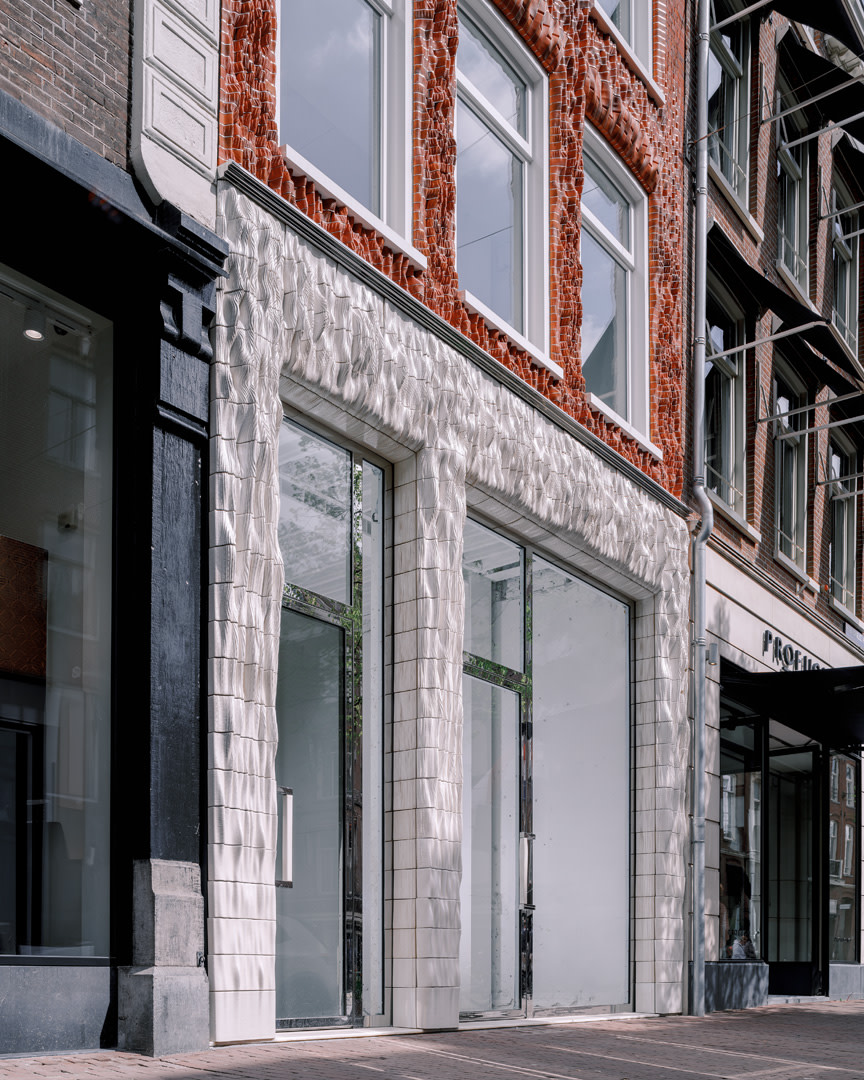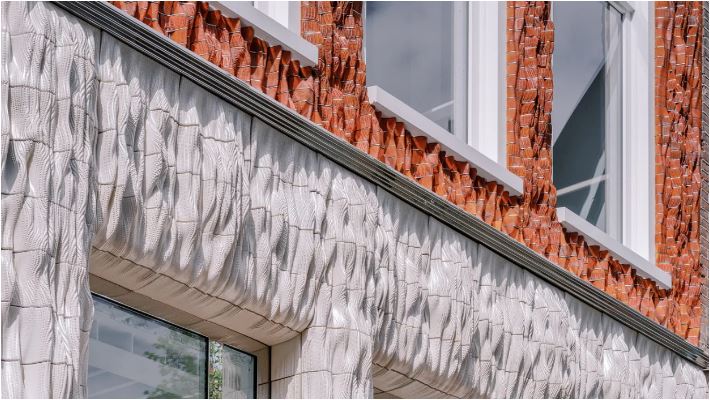In the area of architectural innovation, Rotterdam-based firm Studio RAP has unveiled a application of 3D printing technology in the creation of bespoke ceramic facades. Situated on Amsterdam’s prestigious high-end shopping street at 32 P.C. Hooftstraat, the storefront, initially blending in with its townhome-style counterparts, conceals a unique secret upon closer inspection.
Unlike the conventional bricks adorning its neighboring structures, the facade of this three-story building exhibits a subtle yet distinctive ripple effect. Upon scrutiny, the surface reveals custom ceramic tiles, meticulously designed through algorithmic processes and brought to life via 3D printing with specialized robots. The ingenuity extends down to street level, where white-glazed tiles form an undulating pattern reminiscent of turbulent sea waves.
Studio RAP’s approach diverges from traditional 3D printing applications in construction, opting for a fusion of computational design, specialized robotics, and precision ceramic baking. This novel combination transforms the exterior of buildings into complex and visually captivating spectacles. The facade, designed to replicate the appearance of conventional bricks and tiles, exemplifies Studio RAP’s commitment to pushing the boundaries of architectural expression.
This pioneering endeavor not only sets a new standard in architectural design but also underscores the intersection of technology and creativity in the business landscape. Studio RAP’s innovative use of 3D printing showcases the potential for transformative applications in the construction industry, promising a future where buildings can be both functional and visually stunning.

For the high-end apparel retail storefront in Amsterdam, Studio RAP leveraged computational tools to fashion a rippled form inspired by the intricate weaves and stitches found in textiles. Ter Hall notes that substantial effort went into refining the algorithmic design, aligning it seamlessly with both the 3D printing and clay glazing processes. The objective was to craft a finished tile that authentically resembled fabric. In adhering to city regulations stipulating harmony with neighboring building exteriors, the upper section of the facade replicated the shape and color of conventional bricks. However, Studio RAP’s ceramic brick-like pieces deviate with their distinctive rippled and almost animated surface.
Ter Hall dispels the notion that the project is a mere reproduction, stating, “Maybe you can think robots made this project, but it’s definitely not just copied and then printed out.” He emphasizes the firm’s commitment to reintroducing detail and craftsmanship into architecture.
Achieving this level of precision required the development of custom tools and processes for tile production. Studio RAP designed proprietary software to generate tool paths for the robots based on the geometry of their creations. Additionally, specialized nozzles were crafted for the 3D printers to ensure the high level of detail seen in the thousands of tiles used in the project. Remarkably, each tile took approximately 45 minutes to print. Ter Hall underscores the significance of understanding the capabilities of the robotic system in designing expressively, emphasizing the fusion of technology and craftsmanship in their innovative approach.

Looking ahead, ter Hall expresses the firm’s ambition to tackle even larger and more intricate projects than the Amsterdam storefront. While aiming for substantial undertakings, he clarifies that the focus is not on skyscraper-sized ventures. Instead, Studio RAP’s objective is to push the boundaries of the technique and craft truly unique creations. “We would like to have big projects, but not skyscraper size,” he asserts. “It’s our goal to challenge the technique, to create something really unique.” This outlook underscores Studio RAP’s commitment to innovation and their determination to explore the full potential of 3D printing in architecture.
Subscribe to AM Chronicle Newsletter to stay connected: https://bit.ly/3fBZ1mP
Follow us on LinkedIn: https://bit.ly/3IjhrFq
Visit for more interesting content on additive manufacturing: https://amchronicle.com


